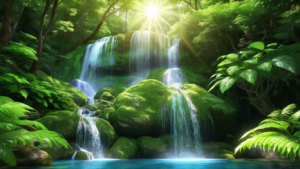
Purifying water is essential for removing contaminants and making it safe for drinking. Here are some common methods for purifying water:
- Boiling:
- Bring the water to a rolling boil and maintain it for at least one minute. At higher altitudes, water should be boiled for three minutes due to the lower boiling point.
- Let the water cool before drinking.
- Filtration:
- Use a commercially available water filter to remove impurities. Look for filters that are certified to meet NSF/ANSI standards.
- Common types of filters include activated carbon filters, ceramic filters, and reverse osmosis filters.
- Chlorination:
- Add liquid household bleach (unscented) to the water. Use 8 drops (about 1/8 teaspoon) of bleach per gallon of water. Double the amount if the water is cloudy or colored.
- Stir and let it stand for 30 minutes. If it doesn’t smell slightly like chlorine, repeat the dosage and let it stand for another 15 minutes.
- The water should have a slight chlorine odor; if not, repeat the dosage and let it stand for another 15 minutes.
- Distillation:
- Boil water and collect the steam in a clean container. The steam will condense back into water, leaving impurities behind.
- This method requires more time and equipment but is highly effective.
- Iodine Treatment:
- Add 5 drops of 2% tincture of iodine to each quart (liter) of clear water, or 10 drops to each quart of cloudy water.
- Let the water stand for at least 30 minutes before drinking.
- UV Purification:
- UV purification devices are available for camping or home use. These devices kill bacteria, viruses, and other pathogens using ultraviolet light.
- Solar Water Disinfection (SODIS):
- Fill clear plastic or glass bottles with water and leave them in the sun for 6 hours (if sunny) to 2 days (if cloudy).
Remember, the effectiveness of these methods depends on the quality of water you’re starting with and the method you choose. Always try to get the clearest water available and use the best method possible for your situation.
